#omnichannel chatbots solution
Explore tagged Tumblr posts
Text
Omnichannel Chatbots: Working, Benefits, and Best Practices
Imagine boosting your sales, enhancing customer satisfaction, and streamlining your support processes — all with a single powerful tool. That’s exactly what you get with Salestown chatbot, an innovative omnichannel solution designed to revolutionize your business operations. With its ability to seamlessly integrate across multiple platforms, provide personalized customer interactions, and automate sales processes, Salestown chatbot offers a competitive edge in today’s digital marketplace.
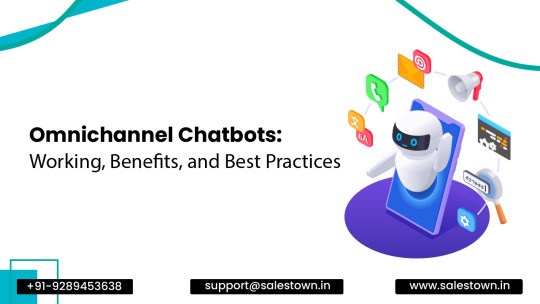
But Salestown is just one player in the broader world of omnichannel chatbots. These AI-powered virtual assistants are transforming how companies interact with their customers across various platforms. In this comprehensive guide, we’ll explore the inner workings of omnichannel chatbots, delve into their numerous benefits, and share best practices for implementation, including a closer look at what makes Salestown chatbot stand out.
👉Try It Free 👈
Table of Contents
Understanding Omnichannel Chatbots
How Omnichannel Chatbots Work
Benefits of Implementing Omnichannel Chatbots
Best Practices for Omnichannel Chatbot Implementation
Spotlight on Salestown Chatbot
The Future of Omnichannel Chatbots
Conclusion
Understanding Omnichannel Chatbots
Omnichannel chatbots are sophisticated AI-powered tools designed to provide seamless customer support and engagement across multiple communication channels. Unlike traditional chatbots that are limited to a single platform, omnichannel chatbots can interact with customers through various touchpoints such as websites, mobile apps, social media platforms, messaging apps, and even voice assistants.
The key feature of omnichannel chatbots is their ability to maintain context and continuity across different channels. This means a customer can start a conversation on a company’s website, continue it via a mobile app, and finish it through a social media platform without losing any information or having to repeat themselves.
How Omnichannel Chatbots Work
Omnichannel chatbots leverage a combination of advanced technologies to deliver a unified customer experience. Here’s a breakdown of their core components and functionalities:
Natural Language Processing (NLP): At the heart of omnichannel chatbots lies NLP technology. This enables the chatbot to understand and interpret human language, regardless of the channel through which it’s communicated. NLP allows the chatbot to extract intent, entities, and sentiment from user messages, facilitating more accurate and contextual responses.
Machine Learning (ML): ML algorithms enable omnichannel chatbots to learn from each interaction, continuously improving their responses and decision-making capabilities. This adaptive learning ensures that the chatbot becomes more efficient and accurate over time.
Centralized Knowledge Base: Omnichannel chatbots rely on a comprehensive, centralized knowledge base that stores information about products, services, FAQs, and customer data. This ensures consistency in responses across all channels.
Integration with Multiple Platforms: These chatbots are designed to integrate seamlessly with various communication platforms, including websites, mobile apps, social media, and messaging services. This integration allows for a consistent user experience across all touchpoints.
Context Management: One of the most crucial aspects of omnichannel chatbots is their ability to maintain context across different channels. This is achieved through sophisticated context management systems that track user interactions, preferences, and history across all platforms.
Personalization Engine: By analyzing user data and interaction history, omnichannel chatbots can deliver personalized responses and recommendations, enhancing the overall customer experience.
Analytics and Reporting: These chatbots come equipped with robust analytics tools that provide valuable insights into customer behavior, frequently asked questions, and areas for improvement in the customer journey.
Benefits of Implementing Omnichannel Chatbots
The adoption of omnichannel chatbots offers numerous advantages for businesses across various industries. Let’s explore some of the key benefits:
Enhanced Customer Experience:
Seamless transitions between channels
24/7 availability for customer support
Personalized interactions based on user history and preferences
Reduced wait times and faster query resolution
2. Increased Efficiency and Cost Savings:
Automation of routine tasks and inquiries
Reduced workload on human customer service representatives
Lower operational costs in customer support departments
Scalability to handle high volumes of customer interactions
3. Improved Customer Engagement and Retention:
Proactive customer outreach and engagement
Consistent brand voice across all channels
Increased customer satisfaction through quick and accurate responses
Higher customer retention rates due to improved service quality
4. Data-Driven Insights:
Comprehensive analytics on customer behavior and preferences
Identification of trending topics and common pain points
Valuable feedback for product development and service improvement
Better understanding of customer journey and touchpoints
5. Increased Sales and Conversions:
Personalized product recommendations
Timely interventions during the sales process
Upselling and cross-selling opportunities
Reduced cart abandonment rates through proactive assistance
6. Brand Differentiation:
Showcasing technological innovation and customer-centricity
Standing out in competitive markets through superior customer service
Building a reputation for accessibility and responsiveness
7. Global Reach and Multilingual Support:
Ability to serve customers in multiple languages
24/7 support across different time zones
Consistency in service quality for international customers
Best Practices for Omnichannel Chatbot Implementation
To maximize the benefits of omnichannel chatbots, businesses should adhere to the following best practices:
Define Clear Objectives:
Identify specific goals for your chatbot implementation
Align chatbot functionalities with overall business objectives
Set measurable KPIs to track success
2. Ensure Seamless Integration:
Integrate the chatbot with all relevant communication channels
Maintain consistency in user interface and experience across platforms
Implement robust data synchronization mechanisms
3. Prioritize User Experience:
Design intuitive conversation flows
Use natural language that aligns with your brand voice
Implement easy-to-use interfaces on all platforms
3. Personalize Interactions:
Leverage user data to provide personalized responses and recommendations
Use AI to anticipate user needs based on past interactions
Implement dynamic content delivery based on user preferences
4. Maintain Human Touch:
Clearly communicate when users are interacting with a bot
Provide seamless handoff to human agents for complex queries
Train the chatbot to recognize emotional cues and respond appropriately
5. Continuous Learning and Improvement:
Regularly analyze chatbot performance and user feedback
Update the knowledge base with new information and FAQs
Refine conversation flows based on user interactions
6. Ensure Data Security and Privacy:
Implement robust security measures to protect user data
Comply with relevant data protection regulations (e.g., GDPR, CCPA)
Be transparent about data collection and usage policies
7. Provide Multilingual Support:
Implement natural language processing for multiple languages
Ensure accurate translations and cultural sensitivity
Offer language selection options for users
8. Optimize for Mobile:
Ensure chatbot interfaces are responsive and mobile-friendly
Optimize conversation flows for smaller screens
Integrate with popular messaging apps for mobile users
9. Implement Proactive Engagement:
Use triggers to initiate conversations at key points in the customer journey
Offer personalized promotions and recommendations
Provide timely updates and notifications
Spotlight on Salestown Chatbot
Salestown chatbot is an excellent example of an omnichannel chatbot solution that incorporates many of the best practices mentioned above. This AI-powered virtual assistant is designed to enhance the sales process and customer support across multiple channels.
Key features of Salestown chatbot include:
Seamless Omnichannel Integration: Salestown chatbot can be easily integrated into websites, mobile apps, social media platforms, and messaging services, providing a consistent experience across all touchpoints.
Advanced NLP Capabilities: The chatbot utilizes state-of-the-art natural language processing to understand customer queries and intent accurately, enabling more natural and context-aware conversations.
Personalization Engine: Salestown chatbot leverages customer data and interaction history to deliver personalized product recommendations and tailored responses, enhancing the overall customer experience.
Sales Process Automation: The chatbot can guide customers through the entire sales funnel, from initial inquiry to purchase completion, streamlining the buying process and increasing conversion rates.
Real-time Analytics: Salestown chatbot provides comprehensive analytics and reporting features, offering valuable insights into customer behavior, popular products, and areas for improvement in the sales process.
Seamless Human Handoff: For complex queries or when customers prefer human interaction, Salestown chatbot offers smooth transitions to live sales representatives, ensuring a positive customer experience.
Multilingual Support: The chatbot can communicate in multiple languages, making it an ideal solution for businesses with a global customer base.
By implementing Salestown chatbot, businesses can significantly enhance their sales processes, improve customer engagement, and drive revenue growth across various channels.
The Future of Omnichannel Chatbots
As technology continues to evolve, the future of omnichannel chatbots looks promising. Here are some trends and developments to watch out for:
Advanced AI and Machine Learning: Chatbots will become even more intelligent, with improved natural language understanding and generation capabilities.
Voice-Enabled Interactions: Integration with voice assistants will become more prevalent, allowing for seamless voice-based interactions across devices.
Augmented Reality (AR) Integration: Chatbots may incorporate AR features to provide immersive product demonstrations and virtual try-ons.
Emotional Intelligence: Future chatbots will be better equipped to recognize and respond to human emotions, providing more empathetic interactions.
Predictive Analytics: Chatbots will leverage big data and predictive analytics to anticipate customer needs and offer proactive solutions.
IoT Integration: As the Internet of Things (IoT) expands, chatbots will interact with smart devices to provide more comprehensive and context-aware support.
Blockchain for Enhanced Security: Implementing blockchain technology could provide more secure and transparent data management in chatbot interactions.
Conclusion
Omnichannel chatbots represent a significant leap forward in customer engagement and support technology. By providing seamless, personalized interactions across multiple channels, these AI-powered assistants are transforming how businesses communicate with their customers. The benefits of implementing omnichannel chatbots are numerous, ranging from enhanced customer experience and increased efficiency to valuable data-driven insights and improved sales conversions.
As demonstrated by solutions like the Salestown chatbot, the potential for omnichannel chatbots to revolutionize sales processes and customer support is immense. By following best practices and staying abreast of emerging trends, businesses can leverage this technology to gain a competitive edge in today’s digital marketplace.
The future of omnichannel chatbots is bright, with continuous advancements in AI, machine learning, and related technologies promising even more sophisticated and effective solutions. As we move forward, businesses that embrace and optimize their use of omnichannel chatbots will be well-positioned to meet the evolving expectations of their customers and thrive in an increasingly digital world.
Keywords:
[ omnichannel chatbots , omnichannel chatbots system , omnichannel chatbots solution , omnichannel chatbots platform , chatbots platform , omnichannel messaging , omnichannel chatbots channel , omnichannel chatbots bots , omnichannel chatbots for support system ]
#omnichannel chatbots#omnichannel chatbots system#omnichannel chatbots solution#omnichannel chatbots platform#chatbots platform#omnichannel messaging#omnichannel chatbots channel#omnichannel chatbots bots#omnichannel chatbots for support system
0 notes
Text
Top Contact Center Software Solutions for Streamlined Customer Engagement

Here’s a look at the top contact center software solutions that can help revolutionize your customer communication strategy:
1. Predictive Dialer Philippines
The Predictive Dialer offered by Lgorithm Solutions is an advanced tool for call centers in the Philippines. This software automates outbound calls, connecting agents only to live customers. By eliminating idle time and call drops, it boosts productivity and ensures maximum efficiency for sales and customer service teams. Ideal for businesses running large outbound campaigns, our predictive dialer optimizes call flow while integrating seamlessly with CRM systems.
2. Power Dialer Manila
For businesses in Manila, the Power Dialer by Lgorithm Solutions is a game-changer. It enables agents to make calls one after another, automatically dialing numbers without manual input. This ensures that your agents spend more time engaging with customers rather than dialing. With powerful CRM integrations, our Power Dialer helps businesses improve their outbound calling efficiency and customer connection rates.
3. Multimedia Dialer Solution
Modern customer interactions go beyond voice calls. The Multimedia Dialer Solution by Lgorithm Solutions allows businesses to communicate with customers via multiple channels, including voice, SMS, email, and chat. This omnichannel approach enhances customer engagement, improves response rates, and ensures a seamless experience across platforms. Ideal for enterprises that need flexible, multi-touchpoint communication solutions.
4. Dialer with Loan Automation
Financial institutions and lending companies can benefit from Lgorithm Solutions’ Dialer with Loan Automation. This innovative solution automates reminders, follow-ups, and payment collection calls for loan processes. By integrating with CRM systems, it simplifies loan management, reduces manual efforts, and ensures timely communication with borrowers. Streamline your loan recovery process with this purpose-built solution.
5. Chatbot Customer Services Philippines
To meet the growing demand for 24/7 support, Lgorithm Solutions provides Chatbot Customer Services in the Philippines. Our intelligent chatbots automate responses to common queries, ensuring faster customer resolutions while reducing agent workload. These AI-driven bots integrate with your existing systems to offer personalized, real-time assistance, enhancing both efficiency and customer satisfaction.
6. CRM Dialer Solution Philippines
The CRM Dialer Solution by Lgorithm Solutions is perfect for businesses in the Philippines looking to integrate their contact center with CRM systems. This software allows agents to manage customer information, track conversations, and optimize calling campaigns directly from their CRM. It simplifies data management and ensures better customer engagement by automating workflows and improving productivity.
7. ACD Solutions Services Manila
Automatic Call Distribution (ACD Solutions) from Lgorithm Solutions in Manila ensures that customer calls are routed to the right agents quickly and efficiently. By managing incoming calls with intelligent routing systems, businesses can reduce wait times, improve call handling efficiency, and deliver a superior customer experience. Perfect for businesses that need to manage high call volumes seamlessly.
8. CRM Dialer for Collections
For businesses focused on debt recovery and collections, Lgorithm Solutions’ CRM Dialer for Collections simplifies the process. Automating outbound collection calls, this software ensures timely reminders and follow-ups. With CRM integration, agents can manage customer data, track payment statuses, and improve recovery rates, making it the ideal solution for collection agencies and lending firms.
9. Omnichannel Dialer Solution
Lgorithm Solutions’ Omnichannel Dialer Solution enables businesses to unify communication across multiple channels, including voice, email, SMS, and live chat. By providing a consistent customer experience across platforms, this solution enhances engagement and increases operational efficiency. Businesses can easily monitor and manage all customer interactions through a single interface.
10. Automatic Dialing Modes
At Lgorithm Solutions, we offer various Automatic Dialing Modes, including predictive, progressive, and power dialing. These dialing modes allow businesses to automate outbound calls based on specific requirements. Whether you’re running large-scale campaigns or targeted outreach, our customizable dialing solutions ensure better connectivity, reduced agent idle time, and optimized workflows.
Why Choose Lgorithm Solutions?
At Lgorithm Solutions, we pride ourselves on delivering contact center software that is reliable, scalable, and tailored to meet business needs. Our solutions are designed to:
Improve agent efficiency through automation.
Enhance customer engagement with omnichannel communication.
Streamline workflows with CRM integration.
Boost productivity with advanced dialing tools.
Whether you’re a small business or a large enterprise, our feature-rich software ensures your contact center operates at peak performance.
Conclusion
Optimizing customer communication requires the right tools. Lgorithm Solutions provides cutting-edge solutions such as Predictive Dialer Philippines, CRM Dialer Solutions, and Omnichannel Dialer Solutions to ensure your business delivers outstanding results. Upgrade your contact center with our software and achieve seamless, efficient, and customer-centric operations.
To learn more about our offerings, visit Lgorithm Solutions. Let us help you take your business communication to the next level.
#Predictive Dialer Philippines#Power Dialer Manila#Multimedia Dialer Solution#Dialer with Loan Automation#Chatbot Customer Services Philippines#CRM Dialer Solution Philippines#ACD Solutions Services Manila#CRM Dialer for Collections#Omnichannel Dialer Solution#Automatic Dialing Modes#Lgorithm Solutions
0 notes
Text
Tired of losing customers due to a disconnected shopping experience? Omnichannel integration is the game-changer you've been waiting for! ✨
#business#omnichannel#real estate#marketing#chatbot#customers#ai#services#management#strategies#solutions#budget#usa business#small bussiness#ecommerce
0 notes
Text
#retail solutions#retail trends#ai in retail#ai consulting#ai consulting in usa#ai chatbot#omnichannel retailing#ai solutions#ai and automation
0 notes
Text
#whatsapp business solutions#whatsapp solution api#two way sms service#voice api#2-way messaging#communications api#sms sender api#chatbot business#cpaas provider#omnichannel chat#sms api services#multi channel communication platform#a2p sms provider#apple business chat#two way text messaging#secure sms api#communications api provider#cpaas providers#whatsapp developer api
1 note
·
View note
Text
#Customer Analytics Software#Omni-channel Customer Engagement Platform#customer self service portal solution#best crm for manufacturing#Live Chat with Co-Browsing Chatbot Solution#Omnichannel Customer Engagement#cloud based crm software#automation in banking industry
0 notes
Text
AI-Powered Omnichannel Chatbot Solution For Customer Engagement
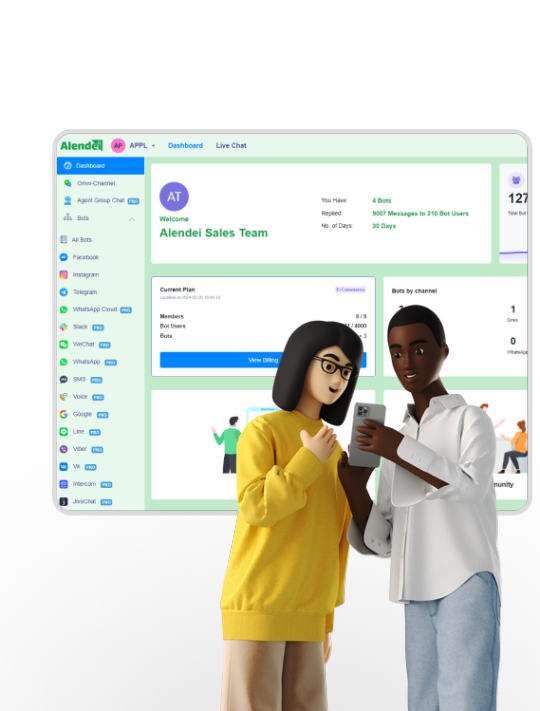
Alendie's Omnichannel chatbot solution for business will deliver integrated & consistent conversational experiences with customers over multiple channels. Our cutting-edge technology integrates multiple communication channels, providing a seamless and consistent customer experience across online and offline platforms. From e-commerce to in-store interactions, our solutions help you streamline operations, personalize customer journeys, and improve overall satisfaction. Whether you're looking to boost sales, improve customer service, or enhance brand loyalty, Alendei offers tailored strategies to meet your business needs. Discover the power of a unified customer experience with Alendei's Omnichannel Solutions.
2 notes
·
View notes
Text
Cracking the Code: Manifesting Success with AI-Driven Marketing Strategies
As the domain of marketing technology continues to grow at a rapid pace and is driven by growth in artificial intelligence (AI) and personalization, marketers encounter exciting opportunities as well as daunting challenges. Adapting to these changes requires practical approaches that allow organizations to stay current, manage change effectively, and operate at scale.
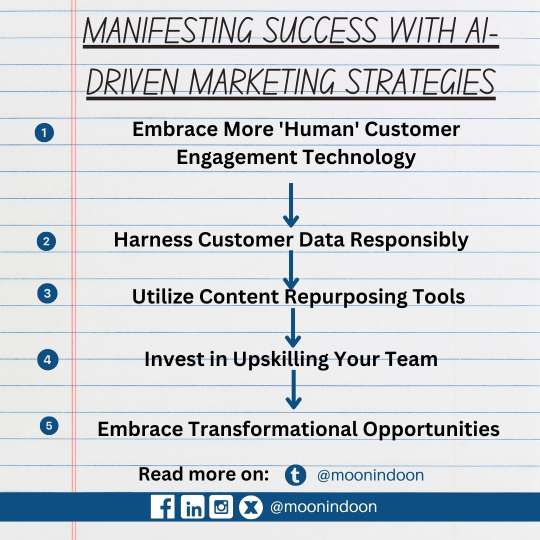
In this article, we explore five practical tactics to help modern marketing teams adapt and thrive in this dynamic environment:
Embrace More 'Human' Customer Engagement Technology:
While chatbots have been around for decades, advancements in AI have significantly enhanced their capabilities. Today, AI-powered chatbots can engage with customers in a remarkably human-like manner, providing round-the-clock support and valuable insights.
Leveraging chatbots not only improves customer experience but also generates valuable data for outbound marketing initiatives. By analyzing customer queries and interactions, marketers can easily get valuable data that can enhance their marketing strategies.
Harness Customer Data Responsibly:
Customers willingly share personal information with companies, providing valuable insights into their preferences, behaviours, and sentiments. Marketers must mine this data responsibly and use it to deliver personalized experiences and targeted offers.
By leveraging predictive analytics and machine learning, marketers can analyze data faster and make informed decisions to enhance omnichannel marketing efforts.
Utilize Content Repurposing Tools:
Authentic content remains paramount in marketing, but creating content for various channels and platforms can be challenging. Content repurposing tools like Optimizely and Interaction Studio help marketers adapt long-form content into social media posts, videos, and other formats.
Expanding your content footprint not only enhances brand visibility but also allows for faster learning and adaptation to changing market dynamics.
Invest in Upskilling Your Team:
While AI-based tools offer significant automation potential, managing and mastering these technologies require skilled professionals. Marketers must invest in continuous learning and cross-functional collaboration to stay ahead.
Effective leadership and teamwork are essential for navigating the complexities of modern marketing. Encouraging knowledge sharing and collaboration across teams fosters a culture of innovation and growth.
Embrace Transformational Opportunities:
As AI continues to reshape the marketing landscape, traditional metrics of success are being redefined. Marketers must embrace the transformative potential of AI and other emerging technologies to serve their customers better.
When evaluating new ideas and technologies, marketers should prioritize customer value and align them with their brand and company values. By focusing on solutions that genuinely benefit customers, marketers can drive meaningful impact and success.
In conclusion, navigating the ever-evolving domain of AI-driven marketing requires a blend of innovative strategies and steadfast principles. By embracing more human-centric engagement technologies, responsibly harnessing customer data, utilizing content repurposing tools, investing in team upskilling, and embracing transformational opportunities, modern marketing teams can position themselves for success. The key lies in adapting to change while remaining true to customer-centric values, fostering collaboration, and prioritizing solutions that genuinely benefit the audience. With these practical tactics in hand, marketers can not only thrive but also lead the way in shaping the future of marketing.
#marketing#AI driven marketing#AI#AI-driven marketing#artificial intelligence#inteligência artificial#ai technology#ai tools#chatgpt#marketing digital#digital marketing#branding#design#human-centric engagement#innovative strategies#customer-centric values#collaboration#content tools#Upskilling#automation#software#networking#innovation#efficiency#iot#'Human' Customer Engagement Technology#user generated content#content marketing#content creation#content creator
4 notes
·
View notes
Text
How to Meet Future Challenges with Innovative Call Center Solutions
In today's fast-paced digital landscape, call centers play a pivotal role in shaping customer experience and brand reputation. As businesses face evolving challenges, adopting innovative call center solutions becomes crucial to staying competitive. Here’s how you can meet future challenges with cutting-edge call center solutions.
1. Embrace Artificial Intelligence (AI) and Automation
AI and automation are transforming call centers by enhancing efficiency and improving customer service. Chatbots and virtual assistants can handle routine inquiries, freeing up human agents to tackle more complex issues. Implementing AI-driven analytics can help predict customer behavior, allowing for proactive service and personalized interactions.
Key Benifits:
· Improved first-call resolution rates · Enhanced customer satisfaction through personalized service
2. Leverage Omnichannel Support
Customers now expect seamless interactions across various channels, including phone, email, social media, and live chat. An omnichannel approach ensures consistent service quality, regardless of the platform used. Integrating all communication channels into a unified system helps agents access complete customer histories and provide coherent support.
Key Benefits:
· Unified customer interactions · Increased accessibility · Better customer retention
3. Implement Advanced Analytics
Data is the backbone of informed decision-making. By utilizing advanced analytics, call centers can gain insights into customer preferences, agent performance, and operational bottlenecks. Predictive analytics can forecast call volumes, helping in resource allocation and scheduling.
Key Benefits:
· Data-driven decision making · Enhanced operational efficiency · Improved customer experience
4. Focus on Agent Empowerment
Empowering agents with the right tools and training is essential for delivering exceptional service. Knowledge management systems, real-time assistance through AI, and regular training programs ensure that agents are well-equipped to handle customer inquiries effectively.
Key Benefits:
· Increased agent productivity · Reduced turnover rates · Higher service quality
5. Prioritize Security and Compliance
With increasing concerns over data privacy, ensuring robust security and compliance in call center operations is critical. Implementing secure communication channels, regular audits, and adhering to regulatory standards helps protect customer information and build trust.
Key Benefits:
· Enhanced data security · Compliance with regulations · Increased customer trust
6. Utilize Cloud-Based Solutions
Cloud-based call center solutions offer flexibility, scalability, and cost-effectiveness. They allow businesses to quickly adapt to changing demands, scale operations as needed, and reduce overhead costs associated with traditional infrastructure.
Key Benefits:
· Scalability and flexibility · Cost savings · Easy integration with other systems
7. Foster a Customer-Centric Culture
At the heart of all innovations should be a commitment to exceptional customer service. By fostering a customer-centric culture, call centers can ensure that all strategies and technologies are aligned with the goal of enhancing customer satisfaction.
Key Benefits:
· Strong customer loyalty · Positive brand reputation · Continuous improvement in service quality
Conclusion
As the call center industry continues to evolve, staying ahead of future challenges requires a proactive approach and the adoption of innovative solutions. By leveraging AI and automation, embracing omnichannel support, implementing advanced analytics, empowering agents, prioritizing security, utilizing cloud-based solutions, and fostering a customer-centric culture, businesses can ensure their call centers are well-equipped to deliver superior service in the face of emerging challenges.
2 notes
·
View notes
Text
In the United States, call center companies play a pivotal role in providing customer support, sales assistance, technical troubleshooting, and various other services for businesses across a multitude of industries. These companies employ thousands of individuals nationwide and operate through various models, including in-house, outsourced, and virtual call centers. Let's delve into the landscape of call center companies in the USA.
1. Overview of the Call Center Industry:
The call center industry in the USA has witnessed significant growth over the years, driven by the increasing demand for cost-effective customer service solutions and the globalization of businesses. Today, call centers cater to diverse sectors such as telecommunications, banking and finance, healthcare, retail, technology, and e-commerce.
2. Major Players:
Several major call center companies dominate the industry, including:
Teleperformance: One of the largest call center companies globally, Teleperformance operates numerous centers across the USA, offering multilingual customer support, technical assistance, and sales services.
Concentrix: Concentrix is another key player, known for its innovative customer engagement solutions. It provides a wide range of services, including customer care, technical support, and digital marketing services.
Alorica: Alorica specializes in customer experience outsourcing solutions, serving clients in various industries. It offers services such as customer support, sales, and back-office support.
Sitel Group: Sitel Group is renowned for its customer experience management solutions. With a global presence, Sitel operates call centers in multiple locations across the USA, providing tailored customer support services.
TTEC: Formerly known as TeleTech, TTEC offers customer experience solutions, digital services, and technology-enabled customer care. It focuses on delivering personalized customer interactions through its contact centers.
3. Industry Trends:
The call center industry is continually evolving, driven by technological advancements and changing consumer preferences. Some notable trends include:
Digital Transformation: Call centers are increasingly integrating digital channels such as chat, email, and social media to enhance customer engagement and support omnichannel experiences.
AI and Automation: Automation technologies, including artificial intelligence (AI) and chatbots, are being adopted to streamline processes, improve efficiency, and provide faster resolutions to customer queries.
Remote Workforce: The COVID-19 pandemic accelerated the shift towards remote work in the call center industry. Many companies have embraced remote workforce models, allowing agents to work from home while maintaining productivity and efficiency.
Data Analytics: Call centers are leveraging data analytics tools to gain insights into customer behavior, preferences, and trends. This data-driven approach enables them to personalize interactions and optimize service delivery.
4. Challenges and Opportunities:
Despite its growth, the call center industry faces several challenges, including:
Staffing Issues: Recruiting and retaining skilled agents remains a challenge for many call center companies, particularly amid competition for talent and high turnover rates.
Security Concerns: With the increasing prevalence of cyber threats, call centers must prioritize data security and compliance to protect sensitive customer information.
However, the industry also presents numerous opportunities for growth and innovation:
Expansion of Services: Call center companies can diversify their service offerings to meet the evolving needs of clients, such as expanding into digital customer engagement, analytics, and consulting services.
Focus on Customer Experience: By prioritizing customer experience and investing in training and technology, call centers can differentiate themselves and gain a competitive edge in the market.
Globalization: With advancements in technology and communication infrastructure, call center companies can explore opportunities for global expansion and tap into new markets.
5. Future Outlook:
Looking ahead, the call center industry is poised for further growth and transformation. As businesses increasingly prioritize customer-centric strategies, call center companies will play a crucial role in delivering exceptional customer experiences and driving business success.
In conclusion, call center companies in the USA form a vital component of the customer service ecosystem, serving a wide range of industries and helping businesses enhance customer satisfaction and loyalty. With ongoing technological innovations and evolving customer expectations, the industry is poised for continued growth and innovation in the years to come.
2 notes
·
View notes
Text
Glassix
Software Development Company
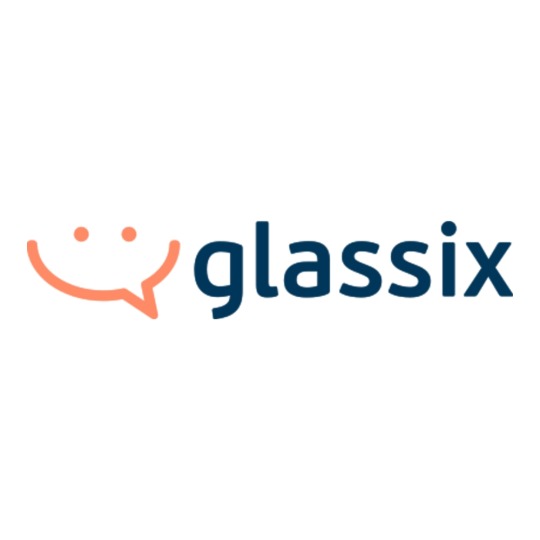
Glassix is a top-rated AI customer support and messaging platform, leveraging the advanced capabilities of conversational AI integrated with the GPT-4 engine. It’s designed to empower busy teams to excel in customer support and experience, featuring an AI-powered unified inbox that consolidates communications across all business channels and apps, including WhatsApp, Apple Messages for Business, social media, email, SMS, and more. Complementing this robust unified inbox, Glassix offers an intuitive drag-and-drop chatbot flow builder and templates, making it effortless to craft smart, efficient automation flows and deploy chatbots to any channel with just a single click. The platform's distinctiveness lies in its comprehensive AI suite and omnichannel features, providing users with innovative and modern tools such as auto-suggested replies, automatic tagging of conversations, one-click conversation summaries, and the capability to deploy generative AI chatbots. These features collectively ensure stellar customer support and experience, setting Glassix apart in the realm of customer engagement solutions.
Contact Details
Glassix
One Boston Place, Suite 2600, Boston, MA, USA 02108
Phone- +1 (617) 683-1236
Website- https://www.glassix.com/
Business Email- [email protected]
Business Hours- Mon - Thu: 9AM - 5PM.
Payment Methods- Credit/ Debit Card, PayPal, Apple Pay, Google Pay, Wire Transfer.
Owner Name- Guy Shalom.
Follow On:
Facebook- https://www.facebook.com/GlassixCompany
YouTube- https://www.youtube.com/@Glassix_CX
Instagram- https://www.instagram.com/glassix_cx/
TikTok- https://www.tiktok.com/@glassix.com
LinkedIn- https://www.linkedin.com/company/glassix
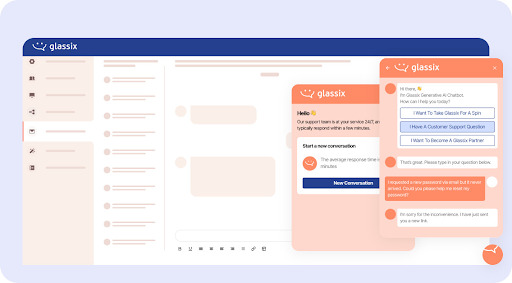
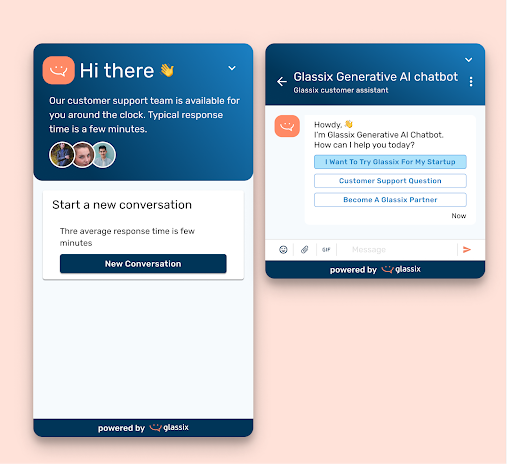
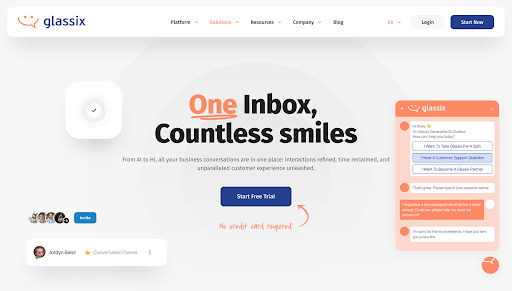
#Customer Support Software#Customer Service Software#Chatbot Platform#Ticketing System#Help Desk Software#WhatsApp Business Chatbot Solution#AI Chatbot tool#AI Customer Communications and Messaging Platform
2 notes
·
View notes
Text
Dynamics 365 for Customer Service is a powerful CRM solution by Microsoft designed to enhance customer support and improve service efficiency. It provides businesses with AI-driven insights, omnichannel support (email, chat, social media, voice), case management, and self-service portals to streamline interactions.
Key features include: ✅ AI-powered chatbots for automated responses ✅ Case management for tracking customer issues ✅ Knowledge base to provide quick resolutions ✅ Omnichannel support for seamless communication ✅ Analytics & reporting to monitor performance
It helps organizations boost customer satisfaction, improve agent productivity, and deliver personalized service experiences
0 notes
Text
Boosting Pharma Growth with Effective Digital Pharmaceutical Marketing
Digital pharmaceutical marketing is transforming how pharma companies reach healthcare professionals (HCPs) and patients. With the rise of digital tools, pharma businesses can now use online platforms, data-driven insights, and personalized communication to improve engagement. As the industry evolves, companies must adopt modern strategies to stay competitive and compliant. This article explores key trends, strategies, and best practices for successful digital pharmaceutical marketing.
What is Digital Pharmaceutical Marketing?
Digital pharmaceutical marketing involves using online channels, data analytics, and technology-driven solutions to promote medicines, educate audiences, and build relationships with HCPs and patients. It includes digital advertising, social media marketing, email campaigns, SEO, and content marketing.
Why Digital Pharmaceutical Marketing is Important
Wider Reach: Digital platforms allow pharmaceutical companies to connect with a global audience.
Cost-Effective: Compared to traditional marketing, digital marketing reduces costs while increasing efficiency.
Data-Driven Decisions: Digital tools provide real-time insights to optimize campaigns and engagement.
Personalization: Companies can target specific HCPs and patients with relevant content.
Regulatory Compliance: Digital platforms enable better tracking and adherence to compliance standards.
Key Trends in Digital Pharmaceutical Marketing
1. AI and Automation
Artificial intelligence (AI) is revolutionizing digital pharmaceutical marketing by enhancing efficiency and personalization. AI-powered chatbots, predictive analytics, and automated email campaigns help companies engage HCPs and patients more effectively.
2. Omnichannel Marketing
A seamless omnichannel approach ensures consistent communication across multiple platforms, including websites, social media, mobile apps, and webinars. This strategy enhances customer experience and improves brand loyalty.
3. Content Marketing and SEO
High-quality, informative content is a crucial component of digital pharmaceutical marketing. Optimizing website content with relevant keywords improves search engine rankings, making it easier for HCPs and patients to find reliable information.
4. Influencer and KOL Marketing
Partnering with key opinion leaders (KOLs) and healthcare influencers builds trust and credibility. HCPs and patients rely on expert insights before making healthcare decisions.
5. Data Privacy and Compliance
As digital marketing grows, pharma companies must prioritize data security and regulatory compliance. Adhering to industry standards such as HIPAA and GDPR is essential to protect patient and HCP data.
Effective Strategies for Digital Pharmaceutical Marketing
1. Search Engine Optimization (SEO)
SEO enhances online visibility by optimizing website content, using relevant keywords, and improving site structure. Key SEO strategies include:
Using targeted keywords like “digital pharmaceutical marketing” for better ranking.
Creating valuable blog content addressing HCP and patient needs.
Building high-quality backlinks from trusted medical websites.
2. Social Media Engagement
Social media is a powerful tool for digital pharmaceutical marketing. Companies can:
Share educational content on LinkedIn, Twitter, and Facebook.
Engage HCPs through interactive Q&A sessions and live webinars.
Use paid ads to reach specific healthcare audiences.
3. Email Marketing and Automation
Personalized email campaigns help keep HCPs and patients informed about new treatments, industry trends, and medical updates. Automation ensures timely communication without manual effort.
4. Video Marketing and Webinars
Educational videos and webinars improve engagement and knowledge sharing. Pharma companies can:
Host live webinars with medical experts.
Create explainer videos about new drugs and treatments.
Use video testimonials to build trust.
5. AI and Chatbots for Customer Support
AI-powered chatbots enhance digital pharmaceutical marketing by providing instant responses to customer inquiries. Chatbots can:
Offer 24/7 support to HCPs and patients.
Provide product information and FAQs.
Collect data for improving engagement strategies.
Challenges in Digital Pharmaceutical Marketing
Regulatory Restrictions: Pharma companies must navigate strict regulations when promoting medical products online.
Data Security Concerns: Protecting patient and HCP data is critical to maintaining trust.
Content Accuracy: Ensuring that digital content is medically accurate and compliant with industry guidelines is essential.
HCP and Patient Trust: Companies must focus on transparent and ethical marketing to build credibility.
Keeping Up with Technology: The fast-changing digital landscape requires pharma businesses to continuously adapt and innovate.
Best Practices for Successful Digital Pharmaceutical Marketing
Focus on Compliance: Always follow FDA, HIPAA, and GDPR guidelines when marketing pharmaceuticals online.
Leverage Data Analytics: Use digital insights to refine marketing strategies and improve engagement.
Personalize Communication: Tailor content to meet the specific needs of HCPs and patients.
Invest in High-Quality Content: Educational and informative content builds trust and improves SEO rankings.
Stay Updated with Trends: Keep track of emerging technologies like AI, automation, and big data to enhance marketing efforts.
The Future of Digital Pharmaceutical Marketing
The future of digital pharmaceutical marketing will be driven by technological advancements and personalized engagement strategies. Key developments include:
AI-Driven Marketing: Advanced AI tools will optimize targeting and content personalization.
Augmented Reality (AR) and Virtual Reality (VR): These technologies will enhance product demonstrations and medical education.
Blockchain for Data Security: Secure transactions and data management will become more critical.
Voice Search Optimization: With the rise of voice assistants, optimizing content for voice search will improve accessibility.
Conclusion
Digital pharmaceutical marketing is shaping the future of the healthcare industry. By leveraging AI, social media, SEO, and data-driven strategies, pharma companies can enhance engagement, improve compliance, and drive better healthcare outcomes. Staying ahead of digital trends and prioritizing ethical marketing practices will ensure long-term success in the evolving pharmaceutical landscape.
0 notes
Text
Best IICS in Hyderabad | Informatica Cloud Training
The Role of Service Connectors in CAI (Conversational AI)
Introduction
Conversational AI (CAI) is transforming the way businesses interact with users through chatbots, virtual assistants, and voice-driven interfaces. One of the most critical components of CAI systems is Service Connectors, which enable seamless integration between AI-driven interfaces and external services, databases, and APIs. These connectors ensure that CAI solutions provide accurate, real-time responses while enhancing automation and user experience. Informatica Cloud Training

What Are Service Connectors in CAI?
Service Connectors are middleware components that facilitate communication between CAI platforms and external data sources, enterprise applications, and third-party APIs. They act as bridges, ensuring that AI-powered assistants can fetch and process relevant data dynamically. Without service connectors, conversational AI systems would be limited to static responses and cannot interact meaningfully with users.
Key Functions of Service Connectors
Data Retrieval & Processing: Service connectors enable CAI systems to fetch real-time data from CRM, ERP, or other databases to provide up-to-date responses to user queries.
API Integration: They allow chatbots to interact with various APIs, including payment gateways, weather services, and customer support platforms, to deliver multi-functional assistance.
Automation & Workflow Execution: Service connectors facilitate automated workflows by triggering actions based on user requests, such as booking appointments or processing orders. Informatica IICS Training
Security & Compliance: They ensure secure data transactions by enforcing authentication, encryption, and compliance with industry regulations like GDPR and HIPAA.
Personalization & Context Awareness: By integrating with user profiles, purchase history, and past interactions, service connectors help conversational AI systems deliver personalized experiences.
How Service Connectors Enhance CAI Performance
1. Real-time Data Access
Service connectors ensure that AI-driven conversations are not static but dynamic. For instance, a customer asking about their order status can receive real-time updates because the chatbot retrieves information from the company's order management system.
2. Seamless Omnichannel Experience
Many businesses operate across multiple platforms, including web, mobile apps, and social media. Service connectors enable CAI systems to provide consistent interactions across all these channels by syncing data from different sources. Informatica Training Online
3. Enhanced Customer Support
By integrating with ticketing systems, helpdesk software, and knowledge bases, service connectors allow AI chatbots to offer immediate and relevant solutions to customer inquiries. This reduces the workload on human agents and improves response efficiency.
4. Increased Efficiency Through Automation
Service connectors play a vital role in automating business processes. For example, a banking chatbot can automate balance inquiries, fund transfers, and loan application processes by connecting with banking APIs securely.
5. Scalability and Flexibility
With service connectors, CAI solutions can scale effortlessly. Businesses can integrate new services, expand functionalities, and upgrade existing workflows without redesigning the entire AI infrastructure.
Common Use Cases of Service Connectors in CAI
E-commerce: AI chatbots integrate with inventory databases and payment gateways to assist customers with product availability, order tracking, and payments. Informatica Cloud Training Institute
Healthcare: Virtual assistants retrieve patient records from Electronic Health Records (EHR) systems to schedule appointments and provide health advice.
Banking & Finance: AI bots connect to financial systems to enable balance inquiries, fraud detection, and transaction alerts
Customer Service: Service connectors link AI assistants with CRM platforms to provide personalized support and escalate complex issues to human agents.
Conclusion
Service connectors are an essential component of modern Conversational AI (CAI) solutions, enabling them to interact with external services, retrieve data dynamically, and automate workflows efficiently. By integrating service connectors, businesses can enhance customer engagement, streamline operations, and provide intelligent, real-time assistance. As CAI technology continues to evolve, the role of service connectors will become even more crucial in building smarter and more responsive AI-driven communication systems.
For More Information about Informatica Cloud Online Training
Contact Call/WhatsApp: +91 7032290546
Visit: https://www.visualpath.in/informatica-cloud-training-in-hyderabad.html
#Informatica Training in Hyderabad#IICS Training in Hyderabad#IICS Online Training#Informatica Cloud Training#Informatica Cloud Online Training#Informatica IICS Training#Informatica Training Online#Informatica Cloud Training in Chennai#Informatica Cloud Training In Bangalore#Best Informatica Cloud Training in India#Informatica Cloud Training Institute#Informatica Cloud Training in Ameerpet
0 notes
Text
Future Trends in Enterprise Online Ordering Systems for the Restaurant Industry
The restaurant industry is evolving rapidly, with enterprise online ordering systems playing a crucial role in enhancing efficiency, customer experience, and profitability. As digital transformation accelerates, restaurants must embrace emerging technologies to stay competitive. This article explores key trends that will shape the future of enterprise online ordering systems.

1. AI-Powered Personalization for Smarter Ordering
Artificial Intelligence (AI) is revolutionizing restaurant ordering platforms by providing:
Personalized menu recommendations based on customer preferences.
AI-driven predictive analytics for order forecasting and inventory management.
Chatbots and virtual assistants for seamless customer support.
2. Voice-Activated Ordering Will Go Mainstream
With the rise of smart devices and virtual assistants, voice ordering will become a major convenience for customers. Features include:
Voice recognition integration for hands-free ordering.
Faster checkout processes with minimal manual input.
Enhanced accessibility for customers with disabilities.
3. Data-Driven Decision Making
Restaurants will rely on big data and analytics to:
Track customer behavior and preferences for targeted marketing.
Optimize menu pricing and promotions based on demand.
Improve inventory management to reduce waste and maximize profits.
4. Mobile-First Experiences & Progressive Web Apps (PWAs)
As mobile usage continues to grow, restaurants must focus on:
Mobile-optimized online ordering platforms with seamless UX/UI.
Progressive Web Apps (PWAs) that provide app-like experiences without downloads.
Push notifications for order updates and personalized deals.
5. Sustainability and Ethical Ordering
Eco-conscious consumers expect restaurants to implement sustainable solutions such as:
Eco-friendly packaging options for takeout and delivery.
Transparency in ingredient sourcing to highlight ethical practices.
Plant-based and sustainable menu options to cater to evolving dietary preferences.
6. Cloud-Based POS & Ordering Systems
Cloud technology will enhance:
Real-time order synchronization across multiple restaurant locations.
Seamless integration with third-party delivery platforms.
Scalability and cost efficiency compared to traditional POS systems.
7. Contactless Payments & Secure Transactions
The demand for cashless and contactless transactions will continue to grow, with restaurants adopting:
QR code payments for quick and secure checkouts.
Cryptocurrency and blockchain integration for secure financial transactions.
Biometric authentication (fingerprint and facial recognition) for added security.
8. Omnichannel Ordering & Cross-Platform Syncing
A unified ordering experience across various platforms will be essential:
Web, mobile app, social media, and third-party integrations for seamless ordering.
Automated loyalty programs that sync rewards across platforms.
Cross-device syncing to allow customers to start an order on one device and complete it on another.
Final Thoughts
The future of enterprise online ordering systems is driven by AI, data analytics, cloud solutions, and customer-centric innovations. Restaurants that invest in smart, integrated, and sustainable ordering systems will gain a competitive edge.
#online ordering system#food ordering systm#food delivery system#food delivery software#food delivery solution
0 notes
Text
AI Chatbots vs. Human Interaction: The Next Frontier in Digital Communication
Introduction
The rise of AI chatbots has revolutionized business communication, enabling seamless, real-time interactions. As AI chat assistance becomes increasingly advanced, a fundamental question emerges—will AI-powered chatbots replace human agents entirely, or will they work alongside them to enhance efficiency and customer satisfaction?
In this blog, we explore the evolution of AI chatbot technology, its impact across various industries, and how businesses can implement AI chat solutions to optimize customer service. Whether you plan to integrate an AI chat assistant or leverage Smartle AI, understanding the role of AI chatbots in digital conversations is essential.
The Evolution of AI Chatbots: From Basic Automation to Smart Conversations
From Scripted Bots to Intelligent Assistants
Early chatbots were simple rule-based systems, limited to responding based on predefined scripts. However, with advancements in AI chat assistance, modern chatbots now employ machine learning and Natural Language Processing (NLP) to interpret user intent, sentiment, and conversational nuances.
Today's AI-driven chatbots, such as Smartle AI, leverage deep learning to provide context-aware, human-like interactions, significantly improving engagement and customer satisfaction. These chatbots continuously evolve, refining their responses based on real-time interactions.
AI Chatbots vs. Human Agents: A Side-by-Side Comparison
While AI chatbots deliver instant support and efficiency, human agents bring emotional intelligence and adaptability to customer interactions. Here’s a comparative analysis:
Feature
AI Chatbots
Human Agents
Availability
24/7 instant responses
Limited to business hours
Response Speed
Immediate query handling
May require response time
Personalization
Data-driven recommendations
Genuine human connection
Problem-Solving
Programmed logic-based
Critical & adaptive thinking
Cost Efficiency
Reduces operational expenses
Requires salaries & training
How AI Chatbots Are Transforming Business Communication
1. Enhanced Customer Experience
AI chatbots ensure rapid responses, reducing wait times and efficiently managing large volumes of customer queries.
2. Scalability & Cost Reduction
Unlike human agents, AI chatbots can simultaneously manage thousands of interactions, significantly lowering customer support costs.
3. Data-Driven Customer Insights
AI-powered chatbots analyze customer interactions, offering actionable insights that help businesses improve engagement strategies.
4. Seamless Integration with Business Systems
AI-driven assistants like Smartle AI integrate with CRM platforms, automation tools, and support systems, streamlining workflows.
5. Omnichannel & Multilingual Capabilities
AI chatbots operate across multiple platforms and support various languages, broadening accessibility for global businesses.
The Future of AI Chatbot Development
The next era of AI chatbot technology focuses on improving conversational depth, emotional intelligence, and predictive analytics. Platforms like Smartle AI are leading innovations in:
Emotionally aware AI chatbots: Understanding user emotions and responding with empathy.
Voice-powered AI chat assistants: Providing a seamless transition between voice and text interactions.
AI automation for complex problem-solving: Handling advanced queries, troubleshooting, and transaction processing.
Frequently Asked Questions (FAQs)
1. Can AI chatbots fully replace human customer support representatives?
AI chatbots efficiently manage repetitive queries, but human agents remain crucial for handling complex and emotionally sensitive issues.
2. How do businesses benefit from AI chat assistance?
AI-driven chat solutions enhance customer interactions, offer instant responses, reduce operational costs, and provide valuable customer insights.
3. What sets Smartle AI apart from traditional chatbots?
Smartle AI employs advanced NLP and machine learning to deliver highly contextual, personalized, and efficient responses beyond conventional rule-based chatbots.
4. Are AI chatbots secure for handling confidential customer data?
Yes, modern AI chatbots comply with strict security regulations, including encryption and GDPR compliance, to ensure data protection.
5. What is the future of AI-powered chat automation?
The future of AI chatbots lies in predictive analytics, enhanced conversational fluency, and greater emotional intelligence to create more natural, engaging interactions.
Conclusion
AI chatbots are transforming business communication by delivering faster, more efficient, and cost-effective customer interactions. However, human intelligence remains indispensable in offering empathy and creativity in problem-solving. Companies that leverage AI chat solutions like Smartle AI can unlock new levels of efficiency and customer engagement.
Are you ready to enhance customer interactions with AI-powered chatbots? Implement AI chat assistance today and elevate your customer service strategy!
0 notes